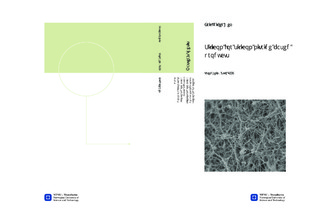Silicon for silicon nitride based products
Master thesis
Permanent lenke
http://hdl.handle.net/11250/249656Utgivelsesdato
2014Metadata
Vis full innførselSamlinger
Sammendrag
Previous studies have investigated the effect of the oxide layer (Ovregård 2013) and iron content (Hem 2013) on the nitridation of silicon powders. This report will take a closer look into the growth mechanisms of different parameter such as storage conditions, particle size and impurities under different stages of the process.The main focus was between two samples; Sample B and sample C. Names were given based on a system of purity, worked out by Hem 2013. In short; Sample B has low amount of impurity, while Sample C has higher amount of impurity. Both of these samples have grain sizes of 0.2-0.8mm.The growth mechanisms change during the nitridation of silicon, depending on temperature and amount of impurity; Sample B forms cavities on the surface before the growth of wool-like, dense, whiskers. Sample C forms the whiskers before cavities. The wool-like whiskers originates from droplets of molten FeSi2 and forms α-Si3N4 whiskers, by a VLS process, which are later retarded and thickened by condensation of SiO2(s). At higher temperatures the whole surface of both samples is covered in β-Si3N4 dendrites with trench like cavities to each side, which form by surface diffusion and evaporation of Si to the reaction sites. The nature of the whiskers change in the C sample at elevated temperatures to longer and straighter whiskers, due to the VLS process is moved away from the surface to the FeSi2 beads at the whiskers' terminus. This change is almost not noted in the B sample.Due to the geometry of the crucible the surface of the sample is soon covered in a cloud of SiO2(s) condensed on the crucible wall. This phenomenon occurs in all samples, and may hinder the nitrogen gas flow to reach the sample surface. This explains the very low amounts of α-Si3N4 but high amounts of cristobalite detected. Humid storage condition was tested on a pure and fine grained (<75 µm) sample named A and showed that the growth of the protective silica layer retards the nitridation process. The fine grained sample A also beat the coarse grained sample B and C in the amount Si converted, proving how important the grain size is for the nitridation process.The role of impurities were discovered; Iron catalyzes the growth of α-whiskers, aluminum oxidizes and preventing the reestablishment of the protective silica layer and copper acts as a catalyst at very low temperatures. Calcium quantities are too low to give any conclusion.
